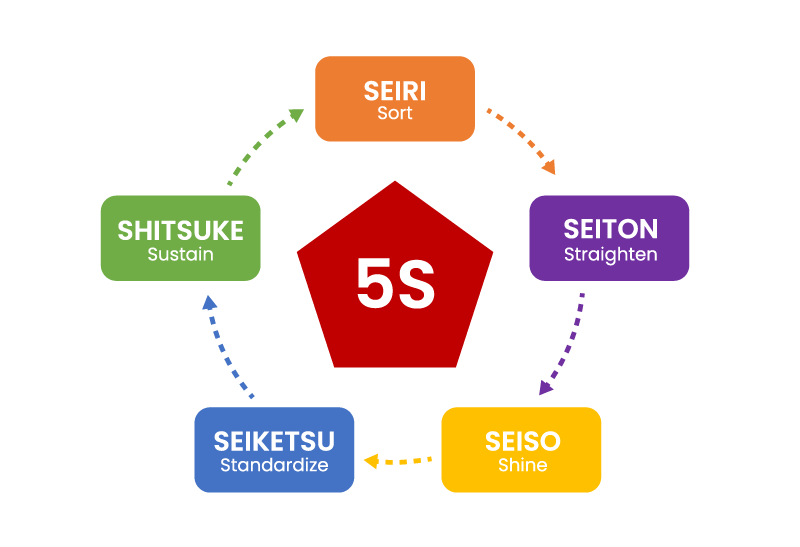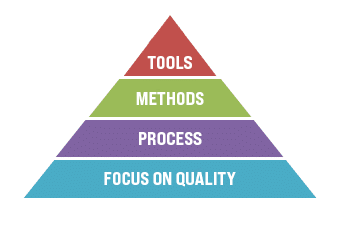A big question in business management is how to improve internal processes. Companies are living organisms and, as such, everything that happens to them internally or externally is interconnected.
In this sense, outdated, poorly understood processes, bottlenecks, and an overall lack of transparency in communication are all hindrances to organizational growth.
For this reason, high-performance organizations undertake day-to-day efforts to improve operational performance and efficiency.
After all, by improving processes, businesses achieve a multitude of benefits such as productivity gains, cost reductions, and competitive advantages.
Furthermore, well-structured and executed processes are fundamental to improving their products or services, generating greater profitability in return.
For your company to be able to enjoy these, and many other advantages, check out practical tips for improving processes.
Where to begin to improve my processes?
More often than not, we do understand that it’s necessary to improve processes. But questions always arise about where or how to begin doing so.
In this sense, take it easy. You don’t need to create a revolution overnight. First, select a single process to improve. What is the best thing to tackle first?
Usually, there is a set of activities that have the greatest impact on the company’s bottom line. There are the most important ones, maybe they have bottlenecks, they are performed frequently, or tasks that could be delegated. Take a moment to reflect on your daily routine and list which process(es) require immediate improvement.
Then analyze which improvement could help the company to achieve its goals or outlined strategies.
By identifying the point you want to reach, it is easier to start executing a plan to improve internal processes. Another good initial step is to define the person or team responsible for leading the changes.
These professionals will be in charge of analyzing the processes in search of improvement points and identifying the main problems and possible solutions.
In this sense, after defining those responsible for improving internal processes, move on to more practical and objective action.
How to objectively improve internal processes
The best method to implement ways to improve processes is to create a detailed action plan to achieve this goal.
With this in mind, the actions that we will list below become objective steps to improve your processes. Although they may seem like separate items, they are interconnected and will help you to achieve a lot of benefits while mitigating risks.
Process Mapping
Process mapping, to put it briefly, is about describing all the steps that occur during the course of a process.
It also makes explicit which professionals and sectors are involved, the rules, permissions, and other process particularities. In addition, it is necessary to know the purpose of that process. What is expected from it?
To better understand the idea, mapping is a drawing of the company’s current scenario, illustrating how the flow of tasks and activities is happening.
This in-depth analysis will be essential to automate processes. In other words, it will make them more efficient, improving performance, reducing errors, and reworking.
Furthermore, mapping allows a survey of all ongoing activities, letting you know a given process from end to end.
Process mapping allows for both micro and macro vision. It makes it possible to find suitable ways to improve activities and enhance performance.
It is important to emphasize that the team responsible for implementing the improvements will need to be in contact with the actual task executors. This enables them to identify process steps and find solutions to encountered difficulties.
Invest in digital transformation
Technology is a great ally to improve internal processes. Especially when it comes to process automation.
In this sense, investing in tools that contribute to the digital transformation of the company is fundamental. Those who do not use technological resources lose many competitive advantages.
The use of platforms and software optimize steps and activities, increasing performance and agility.
Currently there are many tools available that do that. It is essential to choose the one that best suits you and which can be customized to your business’s unique demands.
BPMS tools are essential to improve internal processes since they ensure agility and transparency. In addition, they contribute to clear and accessible communication, making it possible to track the entire flow of activities.
Technology is an ally not only to improve processes, but to optimize them and keep them always updated.
With the incidence of Data Protection laws across the world, like the LGPD, many companies had to redesign their processes. These changes become much easier with the use of BPMS. In this sense, the related software is constantly being updated to meet requirements that arise and are beyond our control.
This is the case, for example, of data protection, permission control, auditing, and providing new measures such as electronic signatures.
Integration between departments and improved internal communication
As we mentioned, a company is a living, interconnected system. Because of that, the integration between departments ensures that the work is assimilated by all.
In other words, by having a vision of the whole, employees realize that their performance interferes with the performance of other people or departments.
Thus, by improving internal processes in one sector, there will be positive impacts throughout the entire company. This promotes a greater companionship feeling and boosts teamwork.
And the quality of internal communication is simply one of the best ways to ensure a good organizational climate.
When improving processes by implementing new technologies, dialogue becomes easier. Especially when the platform allows monitoring of the flow and there is transparency in the activities.
Another issue is features and functionalities that provide a high level of collaboration. Thus, communication becomes objective, and even practical.
Embrace digital document management
The implementation of management software allows the adoption of digital document management. This alternative is ideal to improve internal processes, because documents are stored in an organized manner.
In addition, it becomes much easier to access it, reducing losses with logistics or calamities. And, consequently, it reduces costs with storage and physical space.
In addition, globalization and remote work require that business be conducted regardless of physical location. Digital documents also take the stage here because they allow accessing, signing, and sharing to happen from anywhere.
Not to mention the quality and security of document storage. Document management is facilitated and optimized.
Create a culture of continuous process improvement
Undoubtedly, companies and their processes change as time goes by. That’s why implementing a culture of continuous process improvement is indispensable for an organization to remain competitive.
Improving internal processes must be ingrained as part of the business culture. The act of continuously improving internal processes provides a change-oriented mindset. And thus, you are better prepared for future growth.
Furthermore, when a process undergoes improvement, the way it’s analyzed changes. This allows new opportunities for improvement to be envisioned and executed.
The culture of continuous improvement contributes significantly to the company’s goal of becoming a reference in high performance.
Technology as an ally to improve internal processes
Technology needs to be an aid in process improvement. It needs to be integrable with other systems, such as ERPs, and CRMs, among others.
Another point is that it should contribute to speed up activities execution. To achieve that, it needs to be easy to use, friendly, and have an intuitive interface.
In addition, using a BPMS platform that is low code, with native electronic and digital signature features, as well as mobile access guarantees greater advantages.
So, seek to implement software that is capable of improving internal processes and that brings the solution to all your identified obstacles.
Fusion Platform is a complete platform, capable of supporting and assisting your company throughout the entire journey of process improvement. And your company can try Fusion for free for 15 days.
Tell us, how are your company’s processes doing? Let us know your situation here in the comments, or talk to one our consultants.
Neomind works closely with your business to improve processes.












